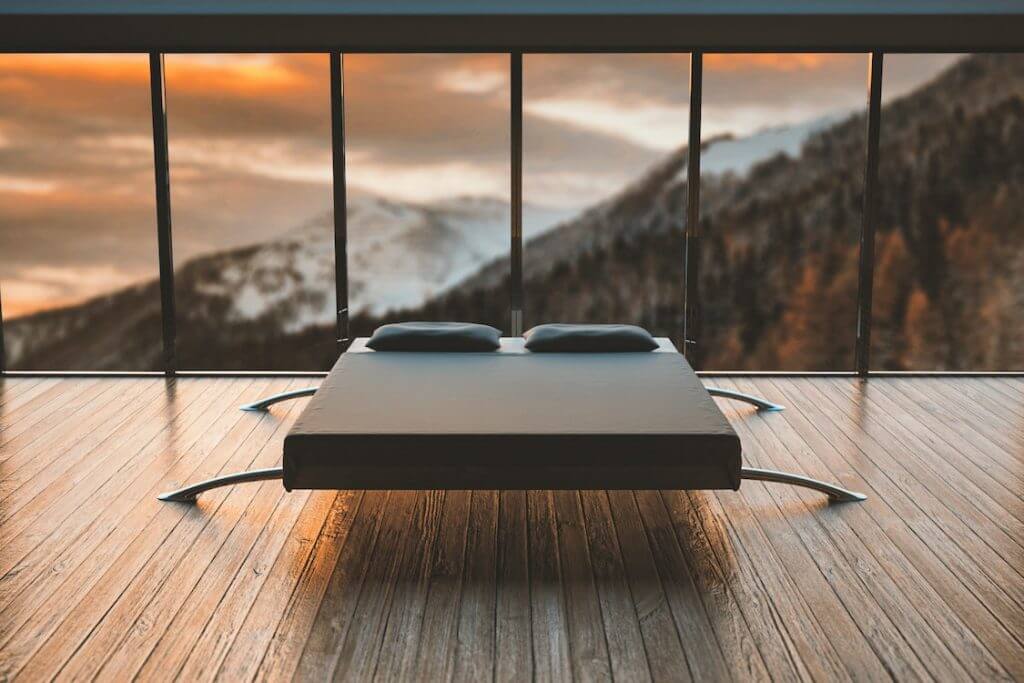A great mattress can help you get a better night’s sleep, but the selection process can be intimidating. There are huge showrooms, salespeople and high prices, so it can feel overwhelming for a first-time buyer.
Understanding the basics of a mattress can help you navigate your options. We’ll cover everything from firmness to size and types to help you find the right mattress for you.
Size
A mattress is a big investment and choosing the right one can unlock years of restful sleep. It’s important to choose a size that fits your room and sleep habits but also works within your budget. With so many choices, finding the perfect fit can seem daunting. Whether you’re shopping for a full, queen or king, our mattress sizing guide will help you find the right fit.
When selecting the size of your mattress, consider who will be sleeping on it and how much space is available in your bedroom. If you’re buying your first bed as a single person, a twin or a double might work well. However, if you’re planning on having children or pets in the future, a queen or even king might be a better option to accommodate everyone.
Your height and sleep position should also be considered when selecting the size of your mattress. If you’re tall, a queen or king might be best for you as it will provide ample legroom while you sleep. On the other hand, if you are a back or stomach sleeper, you might want to select a smaller size so you don’t feel cramped or restrict your movement.
Choosing the right mattress isn’t as easy as picking out a new pair of shoes or a nice dinner date. When it comes to mattresses, there are several factors to keep in mind including size, firmness and warranty. With a little time and research, you can pick out the perfect mattress that will suit your needs and provide you with great sleep for years to come.
Firmness
The firmness of a mattress is a major factor in whether it’s comfortable and suits your sleeping needs. However, firmness can be a difficult concept to pin down since people apply different amounts of pressure and sleep in different positions. Additionally, your body weight also affects how the mattress feels.
A mattress’s firmness can range from extra soft to very firm. The latter typically includes mattresses with thick foam top layers and firm foundations of high-density foam or springs. These models provide a solid push-back and firm support for your back without sacrificing comfort.
While a firm feel is ideal for back and stomach sleepers, it can cause discomfort for side sleepers who need a soft mattress that contours to their shoulder and hip areas. Fortunately, most sleepers fall into the middle of this range so choosing a medium firm option is a good place to start.
The key to choosing a firmness level is understanding the difference between firmness and support. Firmness refers to the initial feeling a mattress gives when you lie down on it, while support refers to how well a mattress keeps your spine in proper alignment.
Materials
The materials used in a mattress can make a big difference in the comfort and durability of the bed. Anderson says to look for fabrics and foam certified by CertiPUR-US, which ensures the mattress doesn’t contain chemicals that are unsafe for humans or pets. She adds that hand-tufted mattresses use no glue between layers, which reduces the potential for sagging and prevents allergens from seeping into the mattress.
The outermost layer of a mattress should be soft and comfortable to the touch, with high GSM fabric for durability. It should also be quilted with foam for an immediate sense of cushioning. Anderson says that natural latex — derived from the sappy sap of rubber trees — is the most popular choice for a comfort layer, as it’s responsive and durable but still very gentle on the body. It also holds less body heat than other foams and sleeps cooler. The other common option for a comfort layer is polyfoam (usually medium- to high-density). Foam doesn’t conform as well, but it’s more affordable than latex and is generally very comfortable.
The transitional layer is between the comfort layers and the base material. It’s usually made of medium- to high-density polyfoam, which is firmer than adaptive polyfoam but soft compared to the support core. This layer helps keep your body from sinking too far into the comfort layers, which can cause them to wear out quickly. A layer of wool or cotton batting can be used as an alternative to this material. It provides decent padding but isn’t very flexible or responsive, so it might not be the best choice for people with back pain. It’s also a little heavier than other types of comfort layers.
Cooling

If you have a memory foam mattress that tends to retain heat, adding a cooling topper or pad can help. These are typically 1 to 4 inches of extra cushioning that rests on top of the mattress, and they can be made from a variety of materials. For example, synthetic foam topper designs often contain conductive materials that transfer heat away from your body, while latex and wool options allow air to circulate more freely, letting the excess warmth dissipate. It is better to have a mattress for backpain in Aus.
Aside from these products, there are also mattress covers that include breathable materials like cotton or linen to promote airflow in and out of the cover. Many of these covers also feature moisture-wicking fabrics to pull sweat and other liquids away from the body. Additionally, they may use phase change materials that switch between solid and vapor depending on your temperature to regulate body heat throughout the night.
Regardless of what material your mattress is made from, maintaining proper handling and maintenance is crucial to keeping it cool. That includes flipping and rotating your mattress every 3 to 6 months, vacuuming it twice a year, and spot cleaning any small stains as soon as they occur. It’s also a good idea to avoid eating in bed, as any food crumbs can attract bugs and other pests to your mattress.
Using a mattress protector is recommended, as it can be easily removed and washed in cold water to keep your mattress clean. Lastly, it’s important to turn off overhead lights or dim them before you go to sleep to reduce the amount of heat in your bedroom. A cool, dark room promotes a healthy circadian rhythm and helps you sleep better at night.
Warranty
The warranty that comes with a mattress covers the manufacturer’s promise to repair or replace a mattress that suffers from defects in construction and materials. It usually lasts from a few years to lifetime. The duration and terms of a warranty may vary by brand, model, and type. Read the warranty carefully to determine what it covers, if it has a prorated or nonprorated fee, and how its value decreases over time.
A warranty can be more complicated to handle than a return policy or trial sleep period. Typically, you must follow the company’s guidelines to submit a claim and provide detailed information. In some cases, the company may send an inspector to your home. It’s a good idea to use certified mail for any documentation and request a return receipt. Once the company reviews your claim, it will send you a response detailing its decision.
Most mattresses come with either a prorated or nonprorated warranty. Prorated warranties require you to pay a percentage of the cost to repair or replace your mattress as it ages, while nonprorated warranties do not. Some mattresses also have a combination warranty that combines aspects of both types.
A warranty is a great way to make sure that you get the best sleep possible for many years. However, it’s important to know what to look for when purchasing a mattress. If you find that your mattress is defective, it’s crucial to file a warranty claim in a timely manner. Otherwise, you could face unnecessary expenses in the future. If you’re not satisfied with the retailer or manufacturer’s response, you can contact your local consumer protection agency or small claims court.




